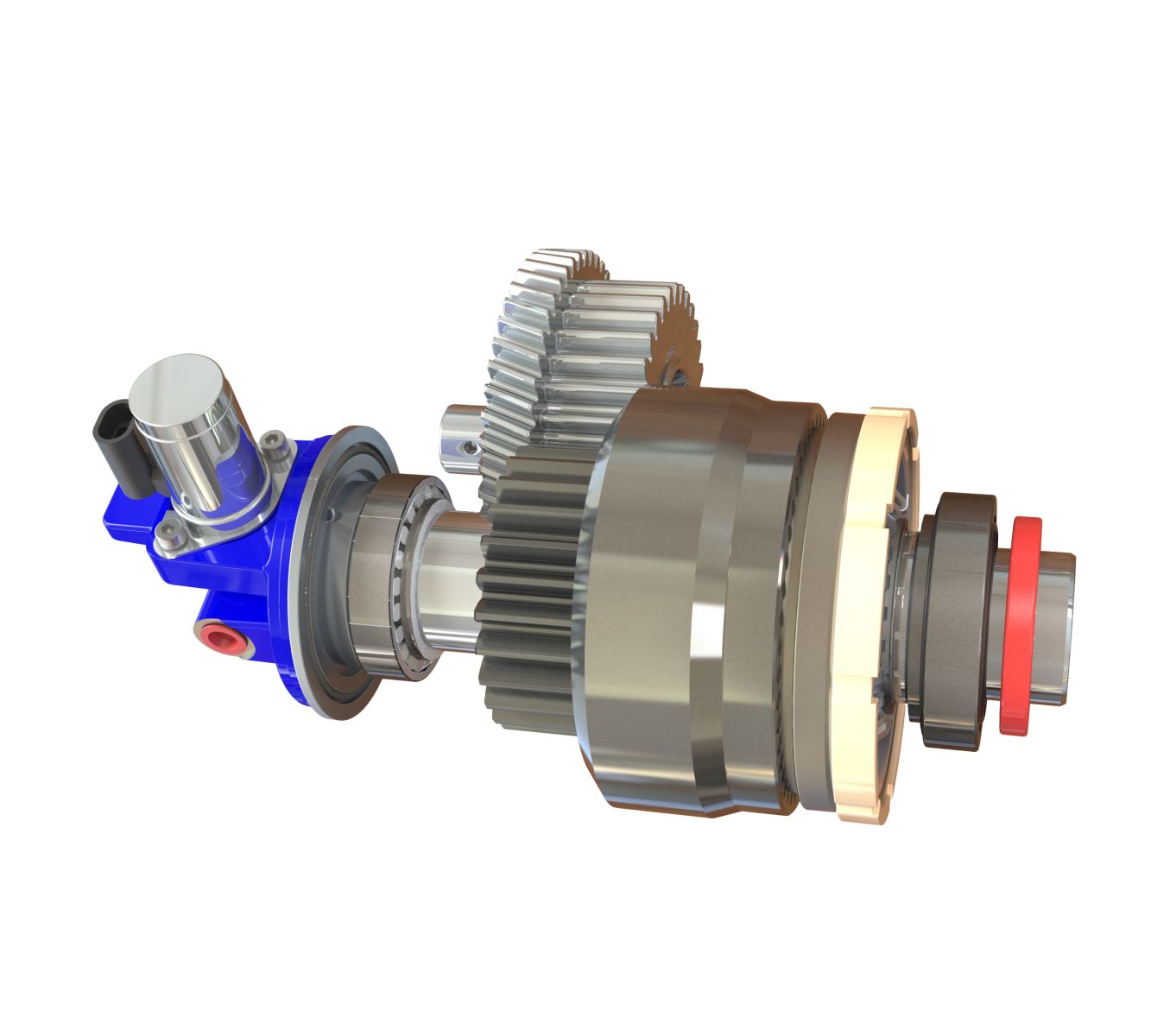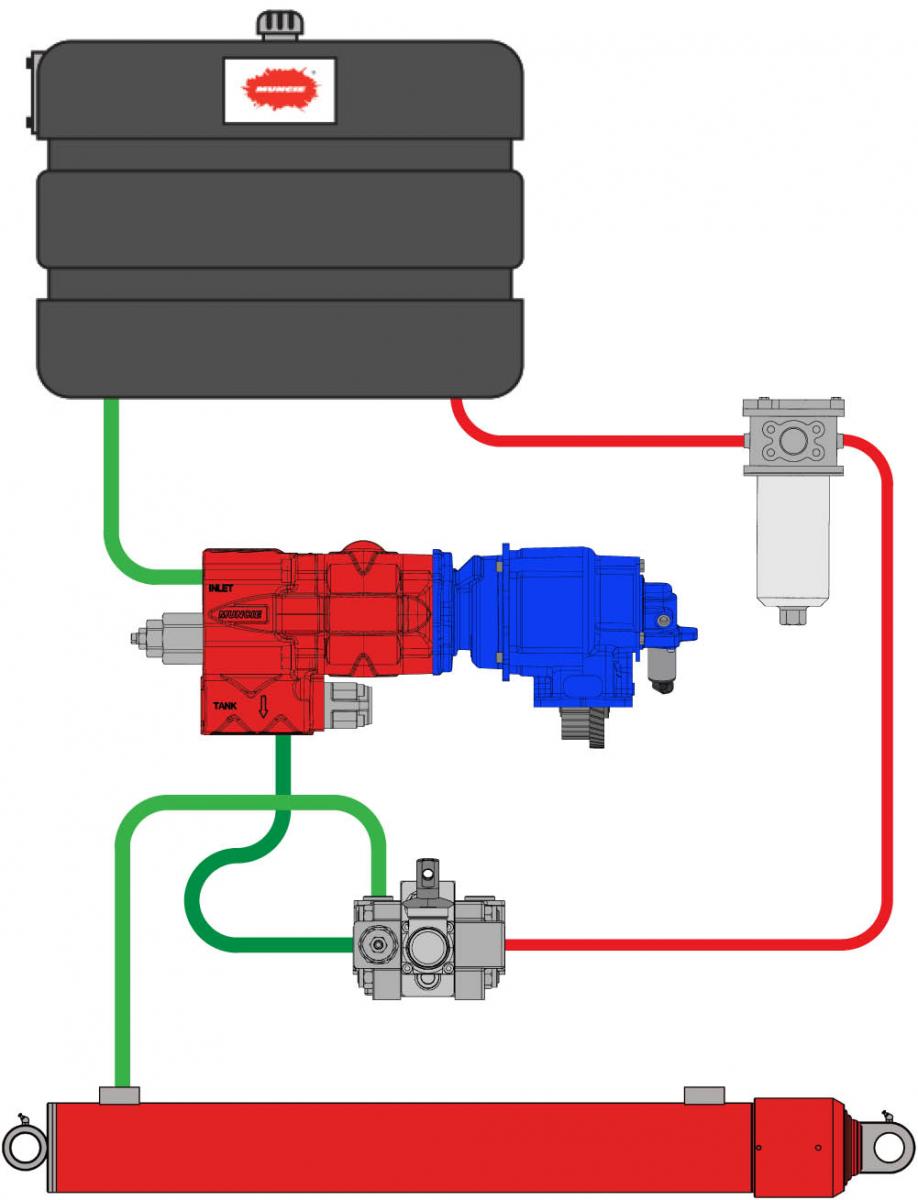How to ensure you're getting the most out of your next PTO or hydraulic system
The pressure on margins seems to always be increasing and the cost of keeping equipment running adds up quickly.
Therefore, it’s important that you’re always getting the most out of your power take-off (PTO) and or hydraulic system to avoid costly expenditures down the road. Oftentimes, people are focused on saving money, and the PTO and the hydraulic system are considered first.
Unfortunately, trying to save money the wrong way in the beginning could end up costing more money down the road. The cost of new vocational work trucks today is often well into six figures, and the only way to pay for that sort of investment is for the truck to be out working—not in the shop.
Here are some tips to consider with PTOs, as well as hydraulic systems:

Shown above is the internal mechanism of the A20 Series PTO.
PTOs:
A used PTO probably won’t be a bargain
Obviously, the PTO must be matched to your new truck transmission and application; but unless you are taking a PTO off one of your own existing trucks, you really don’t know how well it’s been maintained or how much life you can expect. If a PTO fails catastrophically, it can take out the transmission and that won’t be covered under your new truck warranty. In the long run, a new PTO would protect your transmission and other truck equipment.
Don’t buy a regular-duty PTO for your heavy-duty application
When a PTO will be required to drive a blower, large mechanical winch, large vacuum pump, large tandem or triple pump, or other heavy-duty application, a medium-duty unit will likely last for a while. However, you will find the truck back in the shop—losing revenue—to replace a PTO far sooner than it needed to be. Yes, it will cost more to purchase a heavy-duty PTO initially. But you will save far, far more than the initial expense in reduced downtime.
Be careful with copycat products
While some copycat products are better quality than others, you will want to buy a PTO that is designed, tested, and manufactured by a company that has a history of producing quality products. While copycat products may cost less upfront, often times the issues they can cause will wind up costing more.
Buy your PTO from someone who understands PTOs
A PTO is not like a windshield wiper or a mud flap; the right PTO must be configured for your specific truck and application. You need to find a supplier who will be your partner, and make sure the product they are selling will give you good, trouble-free service. A low price for the wrong PTO will not amount to any savings.
Perform regular service checks for leaks in your PTO
You should examine the bolted surfaces of the PTO as well as check the torque of the bolts fastening your PTO to the transmission. Finding and fixing a leak may save a PTO or transmission later, along with saving you unscheduled downtime.
Build a PTO
Hydraulic systems:
Avoid used hydraulic components
Used components typically have contamination waiting to be released into your new system. In addition, without complete disassembly, it’s impossible to tell the amount of wear and types of possible abuse the component may have seen. A new truck deserves a new system—especially if you want the truck to keep generating revenue.
Don’t skimp on your hydraulic hose sizes or types
Even a small change can have a big impact on the flow rate of a hydraulic hose; for instance, the cross-sectional diameter of a ¾" hose is 45% larger than a 5/8" hose. If hose sizes are too small, it will create heat—or worse—and shorten the life of hydraulic components. Likewise, a pump inlet hose is a specific type designed not to collapse internally; whereas the inner liner on return line hose used to feed a pump might completely collapse and cause pump failure without ever giving any evidence of a problem externally.
RELATED: Hydraulic Hose Basics: Types, Laylines, And Pressure Ratings
Use a 3-line system
Using a 2-line system for a dump truck or dump trailer application may save you a little money upfront, but could cost you when your truck is down while a hydraulic pump is being replaced. For the minor cost of one more hose and a sleeve for the pump, a 3-line system provides some insurance—should your driver forget to disengage the PTO when leaving the dump site.
RELATED: Help Prevent The Most Common Dump Pump Failure
Avoid the temptation to make your selection based solely on price
Ending up with a mismatched or low-quality product might mean that you will not only see failure sooner on your replacement, but its failure may damage other components in your system. Much like PTOs, you need a good partner for a supplier, one who understands you and your equipment as well as the components that they are selling.
One final thought
Your hydraulic oil is the lifeblood of your system. Don’t use anything other than new, appropriate hydraulic oil designed to work with your system parameters. And, keep the oil filtered and change regularly.
RELATED: Keep Your Oil Clean: Contamination and Its Many Forms
Parts of hydraulic systems

Shown above is an example of a hydraulic system.
The biggest takeaway should be that the initial purchase price is not the same as the true cost of the product.
Given the huge investment of your truck purchase and the need to keep that investment working and producing revenue, money spent up-front on correct and quality components will continue to pay you dividends for years.


